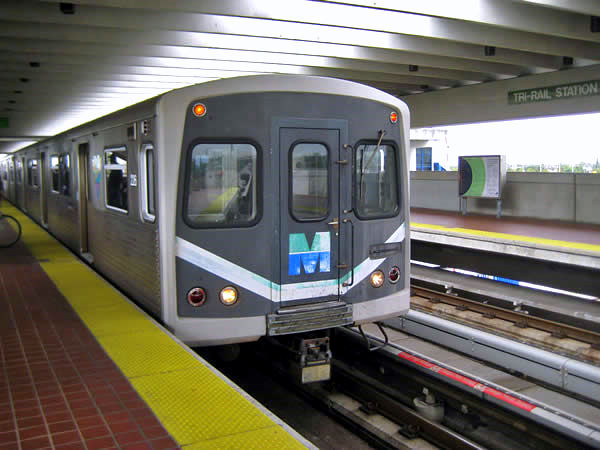With cost estimates rising into the billions of dollars, transit officials in Miami are searching for funding for a much needed expansion of the local mass transit system.
In 2002, Miami-Dade County officials began exploring the construction of a light rail line between the heart of Miami and Miami Beach. 16 years later, the proverbial train still hasn’t reached the station.
While most of the 5.5 million people in the metro area agree that a better mass transit system would be an invaluable addition to their day-to-day lives, local leaders still haven’t decided whether to pursue expansion of its existing infrastructure or invest in repairs. While a number of proposals have gained traction over the years, concerns around cost and location have led every single one to eventually stall out.
With any project set to require billions of dollars in funding, it’s no surprise that the county government is taking its time to consider the options. With each passing day, however, it’s increasingly clear that the city needs an answer — and soon.
A Well Laid Plan
Miami-Dade County first launched its efforts to expand the region’s Metrorail mass transit network in 2002, when voters greenlit a half-percent transportation sales tax to fund the initiative. That tax added about $250 million to the county’s coffers in 2016 alone.
In the decade and a half since the introduction of the tax, the county has acquired some $1.5 billion in revenue. However, since the currently proposed 30-mile extension of the Metrorail system would cost around $4 billion, the county still faces a shortfall that can’t be covered without federal and state funds.
A Work in Progress
Despite occasionally fierce debate among local leaders, the City of Miami and county officials have always been committed to expanding Metrorail, whether by extending current lines or constructing a new light rail system as a complement to the main heavy rail service. The only cause for delay has been the cost of construction.
For years, the city has considered expanding Metrorail by laying tracks closer to street level, an approach that could make much more financial sense than other proposed solutions. “It’s more cost-effective to use that same technology than to introduce something totally new,” Miami-Dade County Transportation Director Alice Bravo told the Miami Herald back in 2016. “It’s starting to make more sense.”
Even in this scenario, funding remains a sticking point. According to the county’s most recent estimates, the cost of each additional mile of Metrorail tracks would be $150 million, while constructing a light rail line would require $1.5 billion. Until the city and county can come to an agreement on where to get the necessary funds (ideally with some contributions from the state of Florida and the federal government), local residents will need to remain content with what they have.
A Job Well Done
Of course, Miami-Dade County could also create money for a future expansion by investing in maintenance strategies that would reduce its long-term operating expenses. After all, better upkeep means less spending on maintenance and repairs.
At Midwest Industrial Supply, Inc., we’ve been providing heavy rail networks like Metrorail with rail lubrication products such as Glidex® and Glidex MC® for more than four decades. These products reduce friction on vital rail switches, safeguarding them from buildups of dust and dirt that keep trains from running smoothly.
Glidex lasts longer than petroleum or graphite-based lubricants, thus saving transit agencies time and money — and it won’t dissolve due to repeated rainfalls, either.
For all of your rail maintenance needs now and in the future, look no further than Midwest for a solution.


